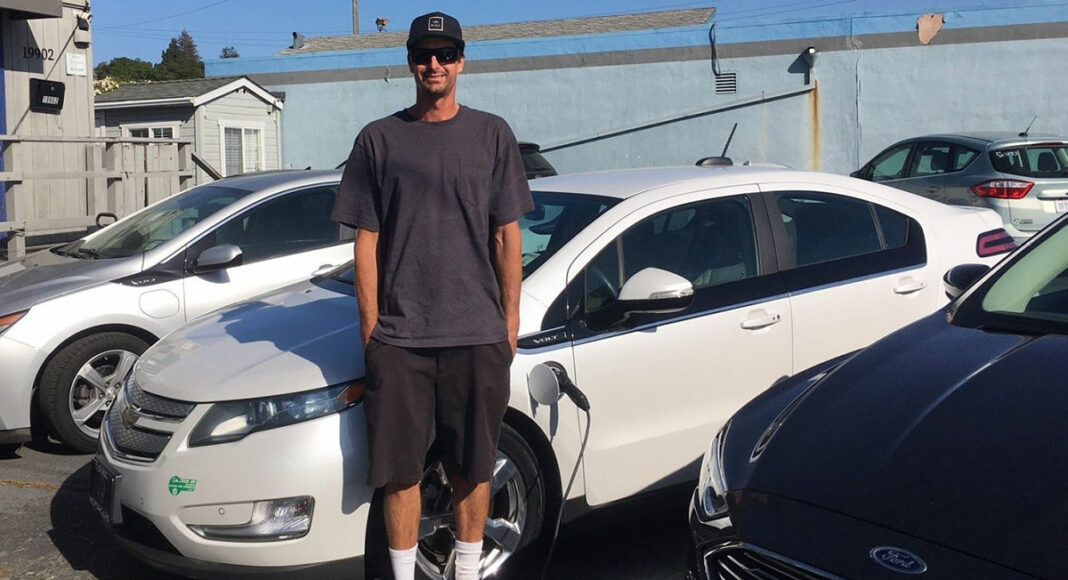A new program aims to make electric vehicles accessible to drivers without breaking the bank.
Tyler Port-Gaarn works as a teacher in the Pajaro Valley Unified School District. He doesn’t drive far for work, but an electric vehicle always seemed too expensive and small to fit his needs.
After hearing about government incentives and the available options, he reconsidered. He signed up for the EVs for Everyone program, hosted by local environmental groups like Ecology Action in Santa Cruz and Regeneración-Pajaro Valley Climate Action in Watsonville.
A few months later, Port-Gaarn purchased a 2015 Chevrolet Volt. The car is a hybrid—so he can rely on gasoline during long trips—and roomy enough to fit multiple surfboards and fishing poles.
“I really enjoy it,” he said.
Port-Gaarn said he has since told a few other people about the EVs for Everyone program.
“I think [electric vehicles are] the way transportation is moving forward in the future,” he said.
The program pairs volunteer and staff advisors with interested buyers to help them find and apply for electric vehicle grants and rebates.
“We have 285 people that we have assigned to advisors, and we have 24 people who have actually purchased an EV,” said Sabrina Delk, the EV program and events specialist at Ecology Action.
Delk emphasizes that the advisors are not salespeople.
“A lot of us just want to be good environmental stewards, and we want to help people get into electric vehicles,” she said, adding that several of the advisors own electric vehicles themselves.
One of the barriers to becoming an electric vehicle owner is accessing the incentives and rebates. Advisors complete training sessions on how to find and apply for these state, regional and federal programs. They then walk interested buyers through the process.
“We have some advisors that will even go to the dealer with you and help negotiate a lease price or a purchase price,” Delk said.
Port-Gaarn said the entire process took a few months. He completed an online survey for the program and waited to hear back about his eligibility. Then, with the help of purchase guidance advisor Michael Saint, he applied for a $5,000 grant and a $700 rebate. The Volt ended up costing him $7,900 instead of the original $13,600.
The EVs for Everyone program advertises that some people might qualify for up to $14,000 in savings or even a free lease. But it takes digging.
“One of the reasons why we exist and are doing this is because these rebates and incentives are complicated,” Delk said. “They’re ever-changing… they’re all separate programs that you have to access individually.”
Ecology Action and partners started the program with grant funding from Electrify America. By helping people switch from gasoline to electric vehicles, they hope to lower emissions and improve air quality.
The EVs for Everyone program is available in English and Spanish from Santa Cruz County down to Ventura County.
“We’re on the brink of something big,” Delk said. “Electric vehicles are the way of the future.”
To get involved, visit evsforeveryone.org.














Trend setting California may be sending the wrong messages for EV growth projections. EV usage in California is half that of gasoline vehicles, and many owners are not repeat buyers. The highly educated and financially well off are currently the primary owners of EV’s. Their usage of EV’s being slightly more than 5000 miles a year is a reflection that the EV is a second vehicle and not the family workhorse vehicle. Then, the growing percentage of EV owners that are switching back to gasoline cars, is a message that may deflate EV growth projections.